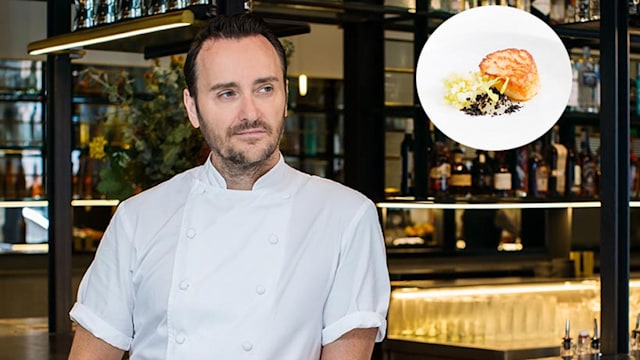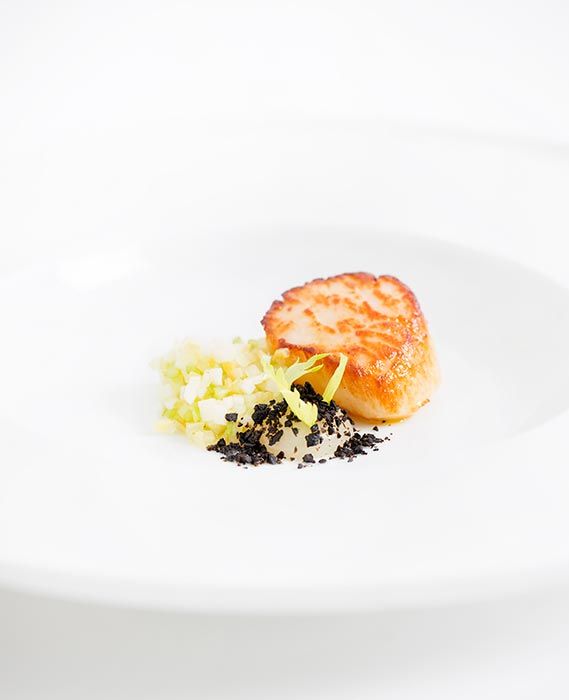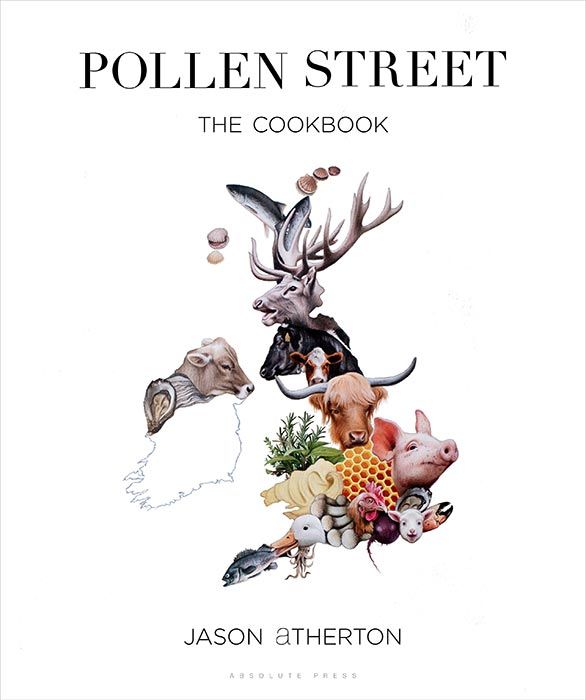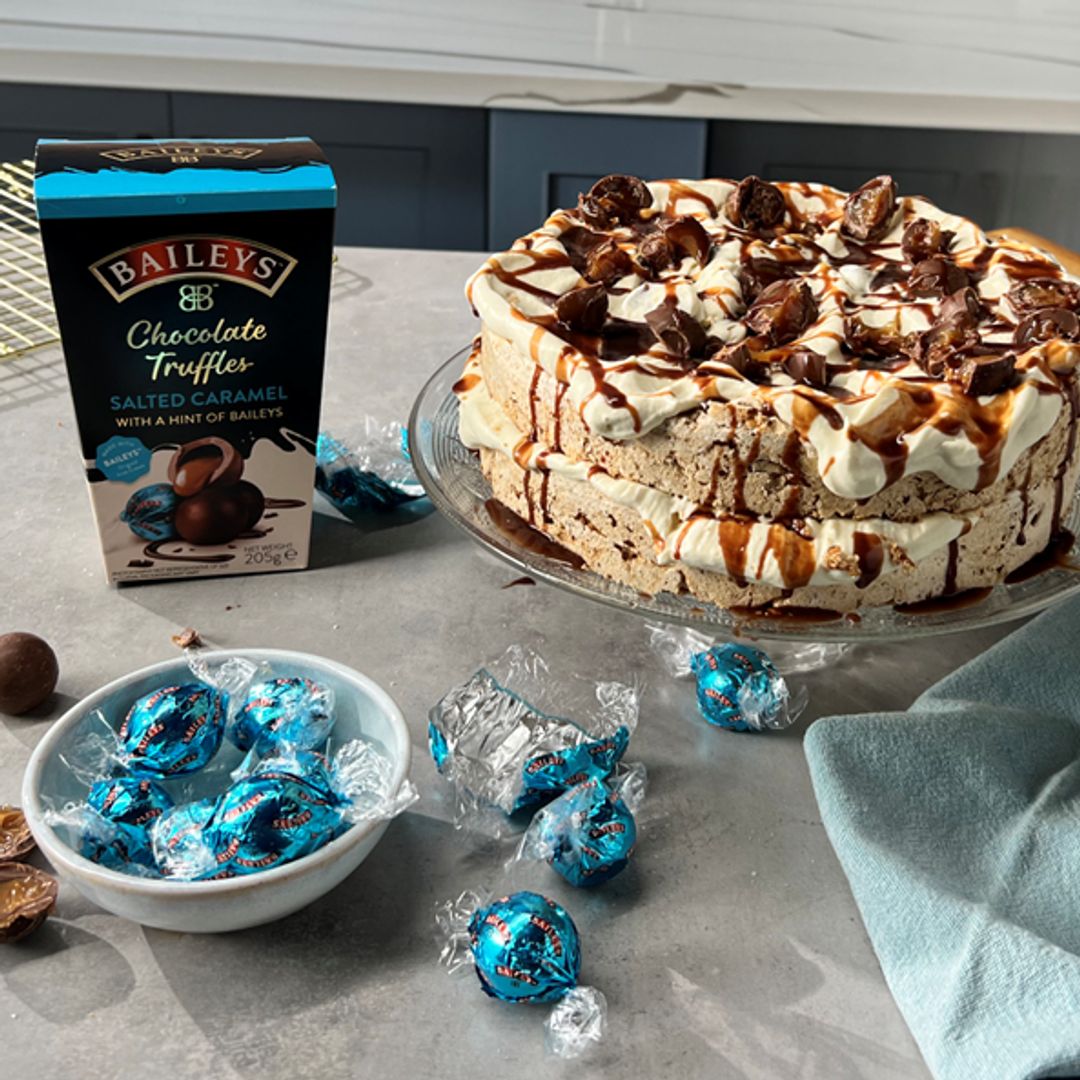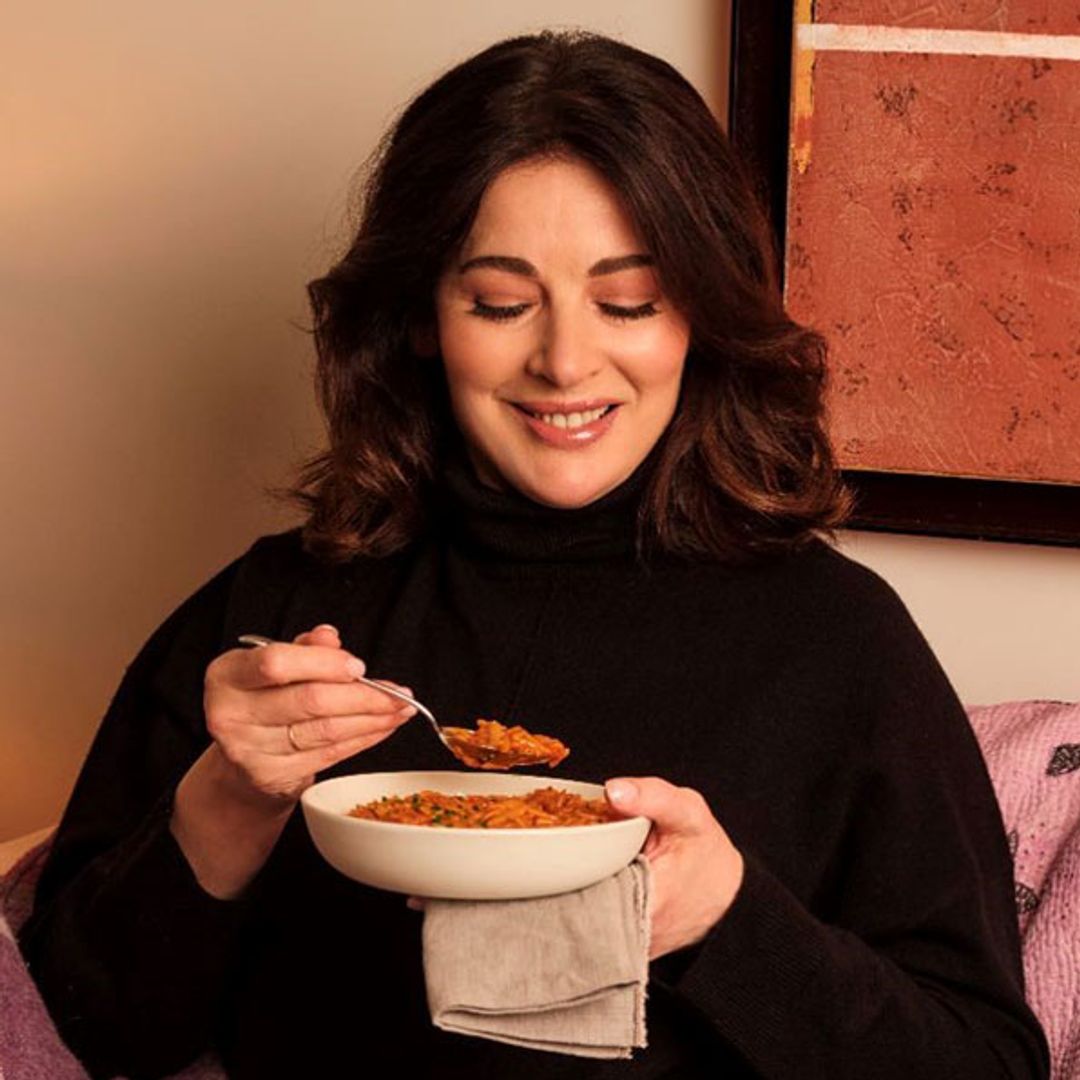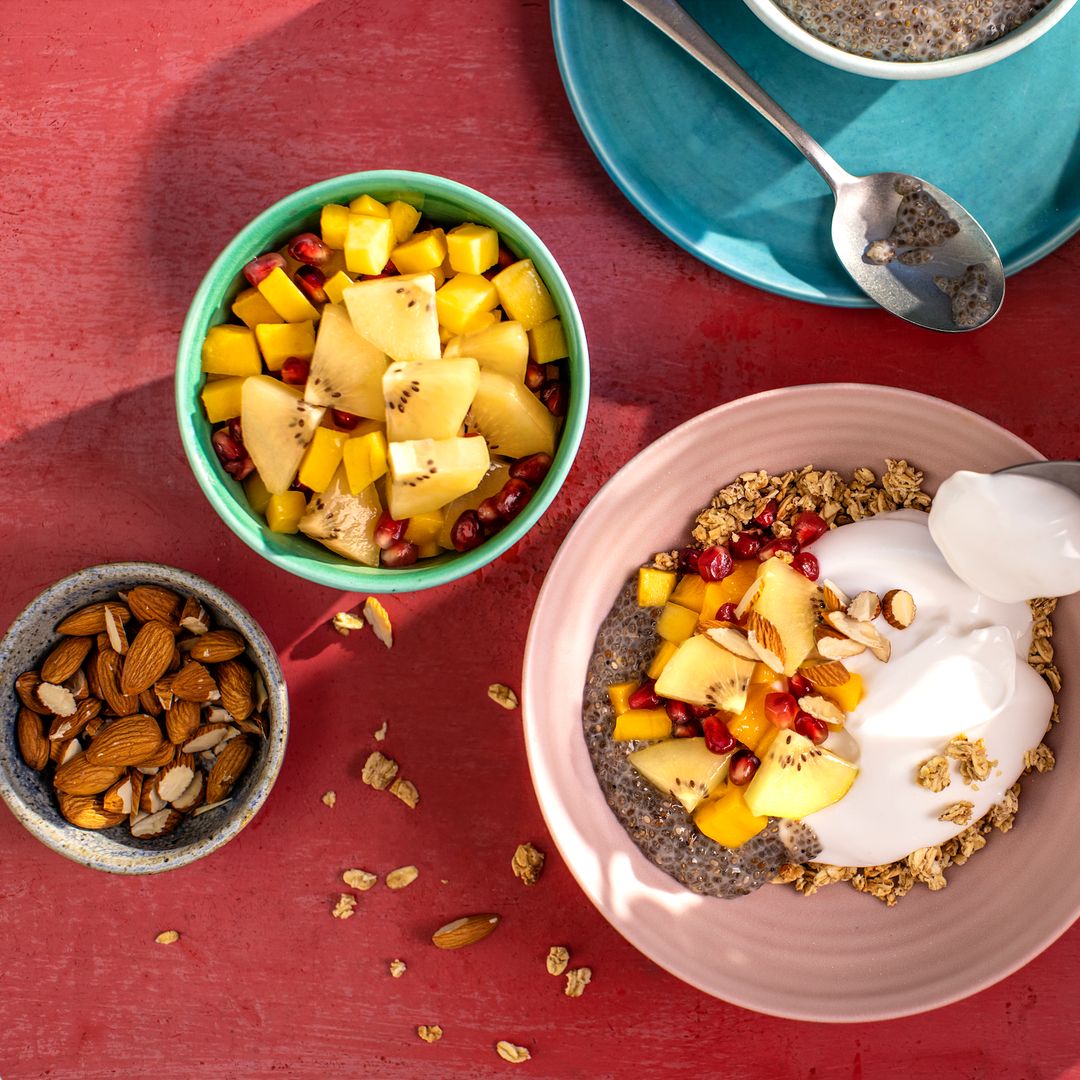Jason Atherton, the award-winning chef behind the acclaimed Pollen Steet Social, has shared his recipe for roast Orkney scallops exclusively with HELLO!. See more recipes from the chef's book, Pollen Street: The Cookbook, here, and pick up a copy of HELLO! magazine to discover the secret to his successful career and his plans for the future.
Serves 4
INGREDIENTS
For the leek & shallot powder
- 2 shallots, peeled and very finely sliced
- Sea salt
- 4 leeks (green parts), very finely sliced (save the white parts to make the Potato & Leek Purée below)
- For the roast scallops
- 4 large, raw Orkney scallops (in shell)
- Olive oil, for cooking
- Maldon sea salt and freshly ground black pepper
- 50g/2oz unsalted butter
- A squeeze of lemon juice
For the potato and leek purée
- 100g/4oz unsalted butter
- White part of 4 leeks (reserved from Leek & Shallot Powder, above), finely sliced
- 2 shallots, peeled and very finely sliced
- 1 Desirée potato, peeled and roughly chopped
- 200ml/7fl oz vegetable stock
- 100ml/4fl oz double cream
For the confit lemon
- 100ml/4fl oz water
- 100g/4oz caster sugar
- 1 lemon
For the pommes soufflés
- 2ltr/70fl oz vegetable oil
- 2 large russet potatoes
For the caviar sauce
- 50ml/2fl oz Potato & Leek Purée (see above)
- 50ml/2fl oz Petrossian liquid caviar
To serve
- Extra virgin olive oil, to drizzle
METHOD:
1) Spread out the shallots on a baking tray. Sprinkle them with a little salt then place the tray into a dehydrator.
2) Blanch the leek slices in boiling salted water for 20 seconds, then drain and cool in iced water. Drain again and pat dry with a clean kitchen towel. Spread out the slices on another baking tray and put into the dehydrator with the shallots. Leave to dry out, which may take 8-12 hours. When the shallots and leeks are fully dried, you should be able to snap a slice in half easily.
3) Use a spice grinder to blitz the dried leeks and shallots with a pinch of sea salt to a fine powder. Store in an airtight container until needed.
MORE: Jason Atherton's winter Lake District lamb with lamb hotpot and beetroot & blackcurrant puree
4) To shuck each scallop, insert a shucking knife into the hinge of the shell, then twist to pop it open. Run the knife around the edge of the shell to cut through the membrane holding the shell halves together, and then remove the top shell. Run the knife under the scallop meat to remove it. Pull away the dark viscera and skirt (fringelike membrane), plus the side muscle that attached the scallop to the shell if it is still there and the coral, then rinse the white scallop meat and lay it on a plate lined with kitchen paper to dry (reserve the coral for another recipe). Cover with clingfilm and keep in the fridge until needed.
5) To pan-roast the scallops, heat a little olive oil in a wide, non-stick frying pan over a high heat. Season the scallops, then place them in the pan, in a ring. Sear for 1-2 minutes or until golden brown on the underside, then flip them over in the order they were added to the pan. Add the butter and, as it melts and foams, spoon it over the scallops while they finish cooking for another minute or so. The scallops are done if they feel slightly springy when pressed. Squeeze a little lemon juice over the scallops then transfer to a warmed plate.
6) For the potato and leek purée, melt the butter in a heavy-based saucepan and sweat the leeks and shallots, stirring frequently, for about 10 minutes or until the vegetables are soft and translucent but not coloured. Add the potato with a little seasoning. Continue cooking, stirring every so often, until the potato begins to soften. Pour in the vegetable stock and bring to the boil, then boil until reduced by half. Stir in the cream and bring back to the boil. Remove from the heat and pour the contents of the saucepan into a Thermomix or a strong blender. Blitz until smooth, then check the seasoning. Pass through a fine sieve into a clean saucepan, ready to reheat for serving.
Recipe taken from Jason Atherton's book, Pollen Street: The Cookbook
7) To make the lemon confit, heat the water and sugar together in a saucepan, stirring until the sugar has dissolved. Bring to the boil and boil until the syrup reaches around 70°C. Meanwhile, trim the top and bottom from the lemon, then peel, removing all the white pith. Cut out the segments from between the membranes. When the sugar syrup has reached temperature, remove from the heat. Gently drop in the lemon segments and leave to cool completely. Transfer to a container, cover and set aside. If making the lemon confit in advance, keep in the fridge but return to room temperature for serving.
8) For the pommes soufflés, divide the oil between 2 heavy-based pans. Heat one pan of oil to 150°C and the other to 190°C. Meanwhile, peel the potatoes, then slice them very thinly (about 5mm/1/4in) with a mandoline. Pat them dry with kitchen paper.
9) It is important to keep the temperature of the oils fairly constant, so work in small batches. Add a batch of potato slices to the first pan of oil (heated to 150°C) and fry, tossing frequently and swirling the potatoes in the oil with a slotted spoon to ensure even cooking. After 3-4 minutes, a skin will have formed around each potato slice. Use the slotted spoon to lift out the potatoes and into the second pan of oil (heated to 190°C). The potatoes will soon begin to puff up. Flip them over to cook the other sides. As soon as they are evenly golden brown, remove them to a tray lined with kitchen paper to drain. Quickly dust the pommes soufflés with a little leek and shallot powder, and then keep warm in a low oven until all the potatoes are cooked and you are ready to serve.
10) For the caviar sauce, gently heat the potato and leek purée with the liquid caviar in a small saucepan.
11) For each serving, place a spoonful of potato and leek purée on a warmed serving plate and set a pan-roasted scallop on top. Drizzle a few drops of extra virgin olive oil around the plate followed by the caviar sauce. Garnish the scallop and plate with a few confit lemon pieces. If you wish, dust the tops of 2 pommes soufflés with a little more leek and shallot powder, then add to the plate, placing one on top of the scallop. Serve immediately.
Our recipes are taken from Pollen Street by Jason Atherton (Absolute Press, £50), published on 15th November, with photography © John Carey. Celebrating his iconic, award-winning London restaurant, the collection is a compilation of 80 of Jason’s favourite Pollen Street Social recipes – a must-have cookbook for serious chefs and aspiring home cooks alike.
